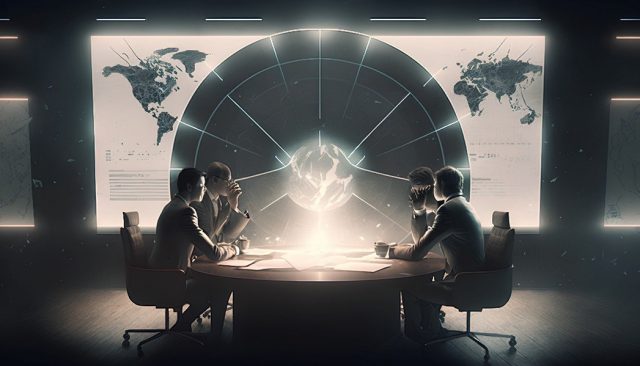Hamy Anthony Hai has first-hand knowledge of the responsibilities of a CIO position, as a CIO himself. In the following article, Hamy Anthony Hai takes a look at some of the key features of the role – including how it has changed and the likely evolution going forward.
The role of CIOs has fluctuated significantly in recent years. Indeed, while the chief information officer still plays a massive part in the corporation, their contributions can vary heavily from firm to firm.
Historic CIO Roles
Hamy Anthony Hai explains that the chief information officer was historically a supporting profession. For many businesses, the CIO was responsible for managing the firm’s IT department, first and foremost; the chief operating officer may have also been tasked with procuring new information technology systems. This focus is still present in around 96% of all firms.
The history of the CIO, simply put, primarily focused on ensuring the normal function of the IT department. As such, Hamy Anthony Hai says that the chief information officer historically would have influenced important decision-making surrounding the company’s IT policies.
However, an important distinction can be drawn between historic and modern CIOs. The first official ones appeared during the 1980s, after the term was coined in a book. This initial projection outlined the role of the CIO as becoming more influential in the future. And, lo and behold, that’s exactly what the business world saw as industries became more reliant on technological advances.
The Current Role of Chief Information Officers
At present, Hamy Anthony Hai says that the responsibility of the CIO is generally to manage all aspects of a firm’s technology. This can include investing in new computers and devices, researching IT opportunities, and so on.
Some may even still be responsible for overseeing the information technology departments. However, this responsibility is usually outsourced to a dedicated management team; the CIO has enough on their plate already!
The Future of the CIO
Hamy Anthony Hai says that the future of the CIO role is likely to be rather complex, owing to the unique nature of the job. And, of course, there’s no way to predict perfectly how the future will go.
Nevertheless, it’s crucial to remember that the future is in our hands. While the following predictions are certainly possible, it will of course depend on future tech releases as to whether or not they come true.
Hamy Anthony Hai reports that the biggest change is likely to be the type of tech businesses will need to embrace. Currently, most CIOs have become proficient in procuring and handling computer technology. However, the next few years are likely to be awash with innovative and groundbreaking contemporary tech development.
What does this mean for exec staff? Well, Hamy Anthony Hai says that chances are, they’re going to have to embrace these new releases. Not only are systems such as AI likely to increase in prevalence in the coming years, but other innovative systems will presumably begin to grace our shelves too.
From autonomous solutions to ever-more advanced software and more, the CIO’s responsibility will be to manage all of these. Thus, though there is no doubt the job is already hard, the roll-out of artificial intelligence probably won’t be taking the pressure off. If anything, the stakes are likely to be higher than ever before for exec staff, going into the coming months.

Skills Required for Future CIOs
Hamy Anthony Hai says that the changing industry may demand additional skills from execs. Of course, the basic requirements will stay the same. CIOs will still need a strong command of computer and technology knowledge. A firm understanding of data and analytics will, hence, still be a crucial skill of all successful IT officers.
However, new competencies may also begin to surface. Critical thinking and flexibility will be more vital than ever; indeed, the tech scene is changing at an almost alarming rate. The best CIOs will hence be the people who can embrace change, innovate with opportunities, and identify the areas that will best match the requirements of the business.
Communication will become more integral, too. After all, there’s a good chance CIOs will find themselves explaining new technology to teams. Patience will be a virtue for this goal.
Final Thoughts
Hamy Anthony Hai says that the chief information officer’s role is often vital for modern businesses. However, although it tends to maintain popularity and significance, the details can vary from firm to firm. With this thought in mind, for companies looking to update their CIO job descriptions, considering how the profession is evolving could help.
Of course, it’s integral to consider here that each firm has a different approach to tech. As such, while the CIO field is changing, the job description should still be tailored to the firm’s needs overall.









